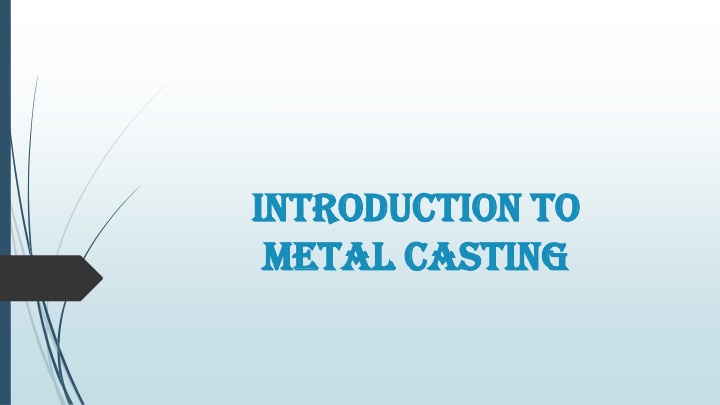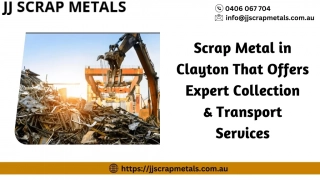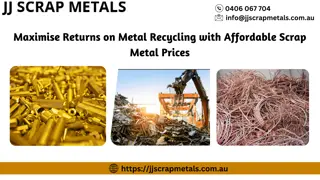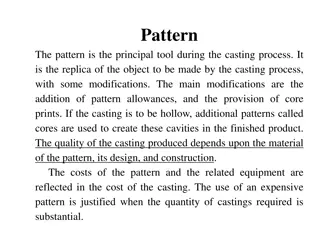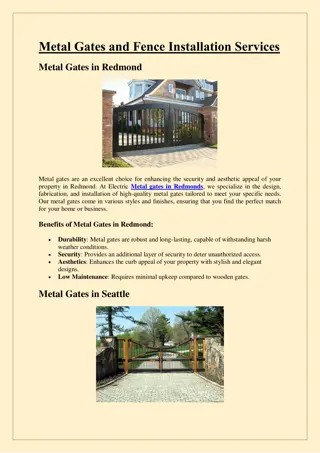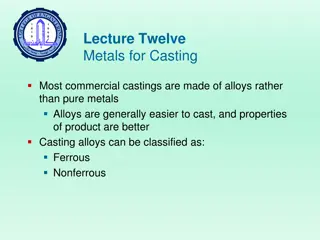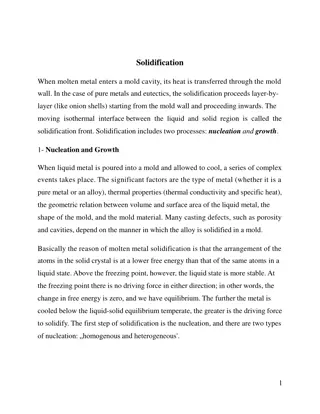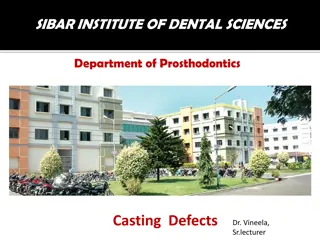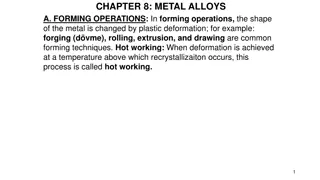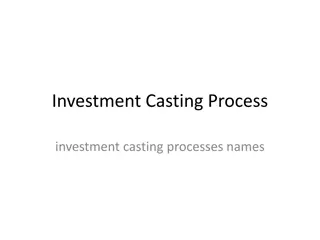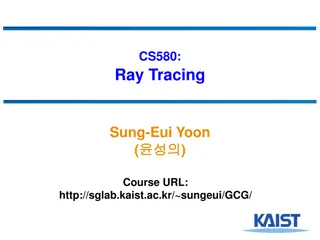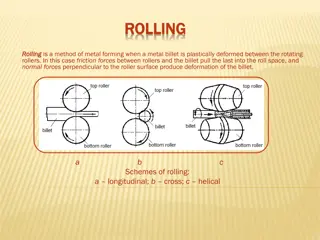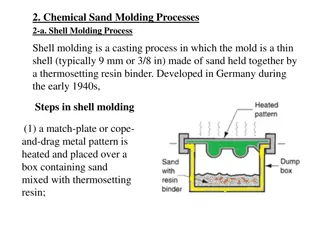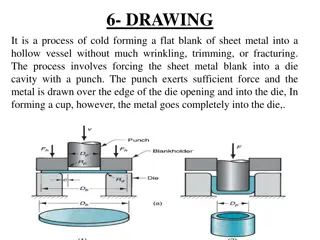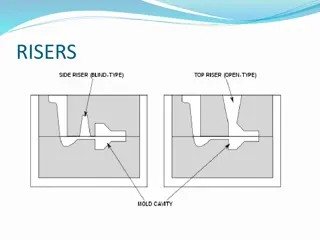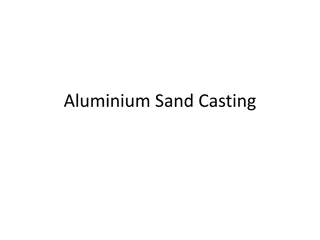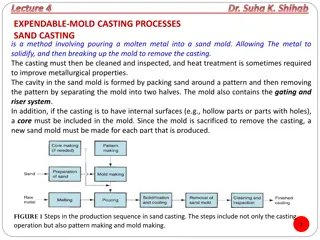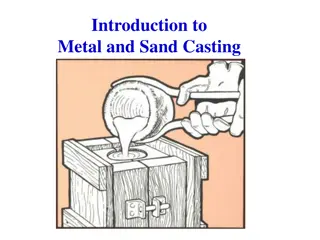Metal Casting Overview
Metal casting is a process dating back to ancient times, where liquid metal is poured into a mold to create various shapes and sizes. Sand casting, a common method, involves forming molds from sand to produce a wide range of metal parts. This process offers advantages like complex shapes and intricate designs but has drawbacks such as potential weaknesses and surface finish issues.
Download Presentation

Please find below an Image/Link to download the presentation.
The content on the website is provided AS IS for your information and personal use only. It may not be sold, licensed, or shared on other websites without obtaining consent from the author.If you encounter any issues during the download, it is possible that the publisher has removed the file from their server.
You are allowed to download the files provided on this website for personal or commercial use, subject to the condition that they are used lawfully. All files are the property of their respective owners.
The content on the website is provided AS IS for your information and personal use only. It may not be sold, licensed, or shared on other websites without obtaining consent from the author.
E N D
Presentation Transcript
Introduction to Introduction to Metal Casting Metal Casting
Metal Casting Why casting ? Basic terms used in casting.
Early History The oldest known cast in existence is a copper frog from 3200 BCE in Mesopotamia. Other early casts from around 3000BCE like weapons and cult objects were discovered in the Middle East and India.
Introduction Casting is a process based on the property of liquid to take up the shape of the vessel containing it. A rigid frame/cavity into which liquid metal is poured to form a casting is called a Mold. Carried out in a foundry.
Have you seen any similar process before? Iced Lolly What do we control? 1. Size & shape of cavity and mold 2. Mixture composition 3. Temperature 4. Cooling time 5. Carefully remove it
What is Sand Casting? Sand Casting is a process in which a cast is formed from a molten metal in a sand mold. Can be used to produce a range of sizes from a fraction of an ounce to hundreds of tons.
Casting Process Material is heated/melted Heated to proper temperature Treated to modify its chemical makeup Molten material is poured into a mold Solidifies
Advantages of Casting Complex shapes Parts can have hollow sections or cavities Very large parts Intricate shaping of metals that are difficult to machine Different mold materials can be used Sand, metal, or ceramics Different pouring methods
Disadvantages of Casting Empty spaces can weaken metal Poor surface finish Small parts hard to remove Additional hardening usually needed
General Sand Casting Two-piece casting flask top is cope, bottom is drag Sand packed around pattern of intended shape Gating system for metal flow and escape trimming necessary Often used with automotive parts and piping Iron, steel, bronze, aluminum, lead, tin, zinc
Six basic steps of casting 1. Mold cavity is produced having the desired shape and size of the part Takes shrinkage into account Single-use or permanent mold 2. Melting process Provides molten material at the proper temperature 3. Pouring technique Molten metal is poured into the mold at a proper rate to ensure that erosion and or defects are minimized
Six Basic Steps of Casting 4. Solidification process Controlled solidification allows the product to have desired properties Mold should be designed so that shrinkage is controlled 5. Mold removal The casting is removed from the mold Single-use molds are broken away from the casting Permanent molds must be designed so that removal does not damage the part 6. Cleaning, finishing, and inspection operations Excess material along parting lines may have to be machined
Casting Terminology Pattern- Replica of the desired part Molding material- material that is packed around the pattern to provide the mold cavity Flask- rigid frame that holds the molding aggregate Mold cavity- combination of the mold material and cores Riser-additional void in the mold that provides additional metal to compensate for shrinkage
Casting Terminology Gating system- network of channels that delivers the molten metal to the mold Pouring cup- portion of the gating system that controls the delivery of the metal Sprue- vertical portion of the gating system Runners- horizontal channels Gates- controlled entrances
Video https://www.youtube.com/watch?v=XlRK_SMWX7Y
